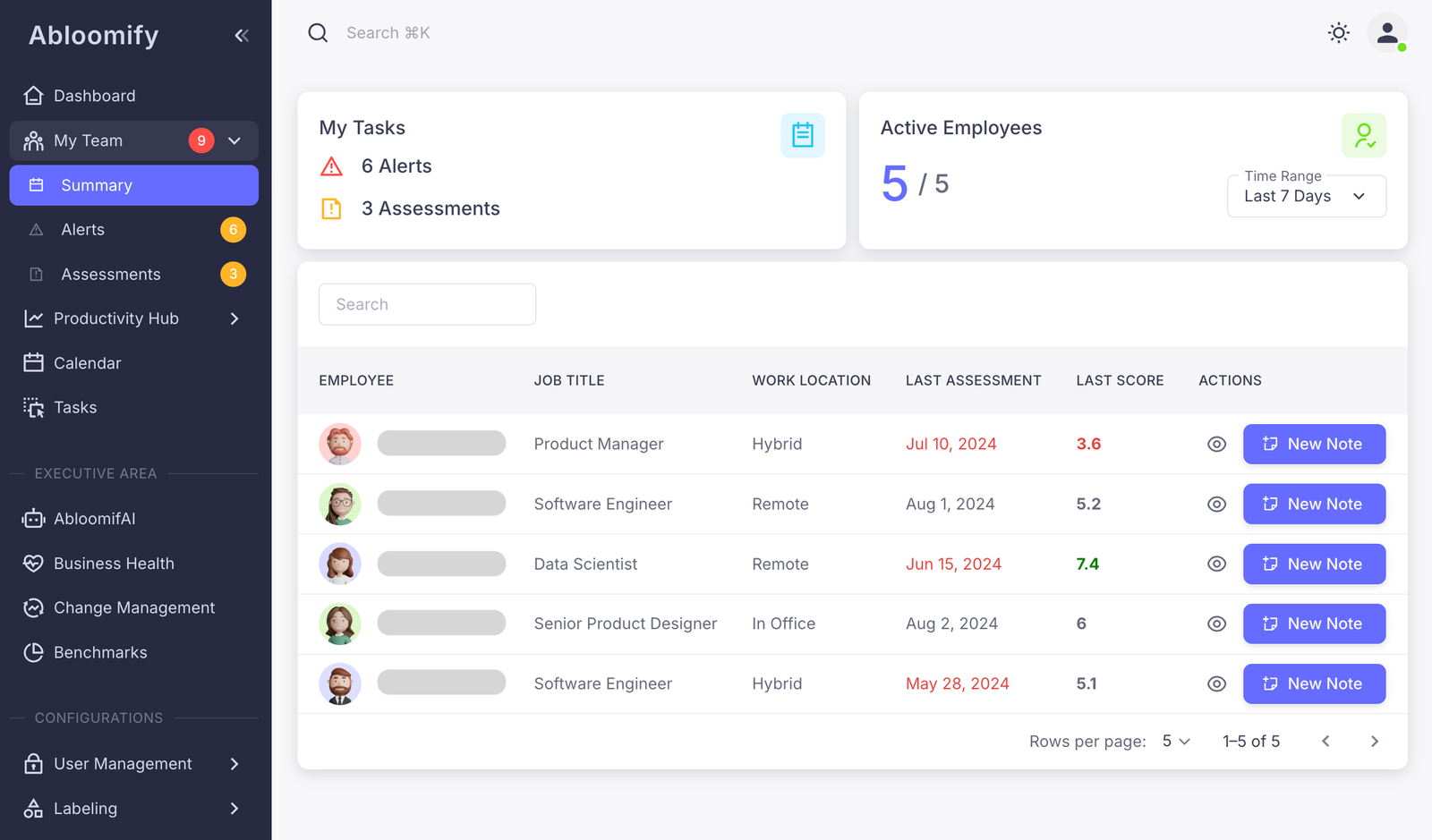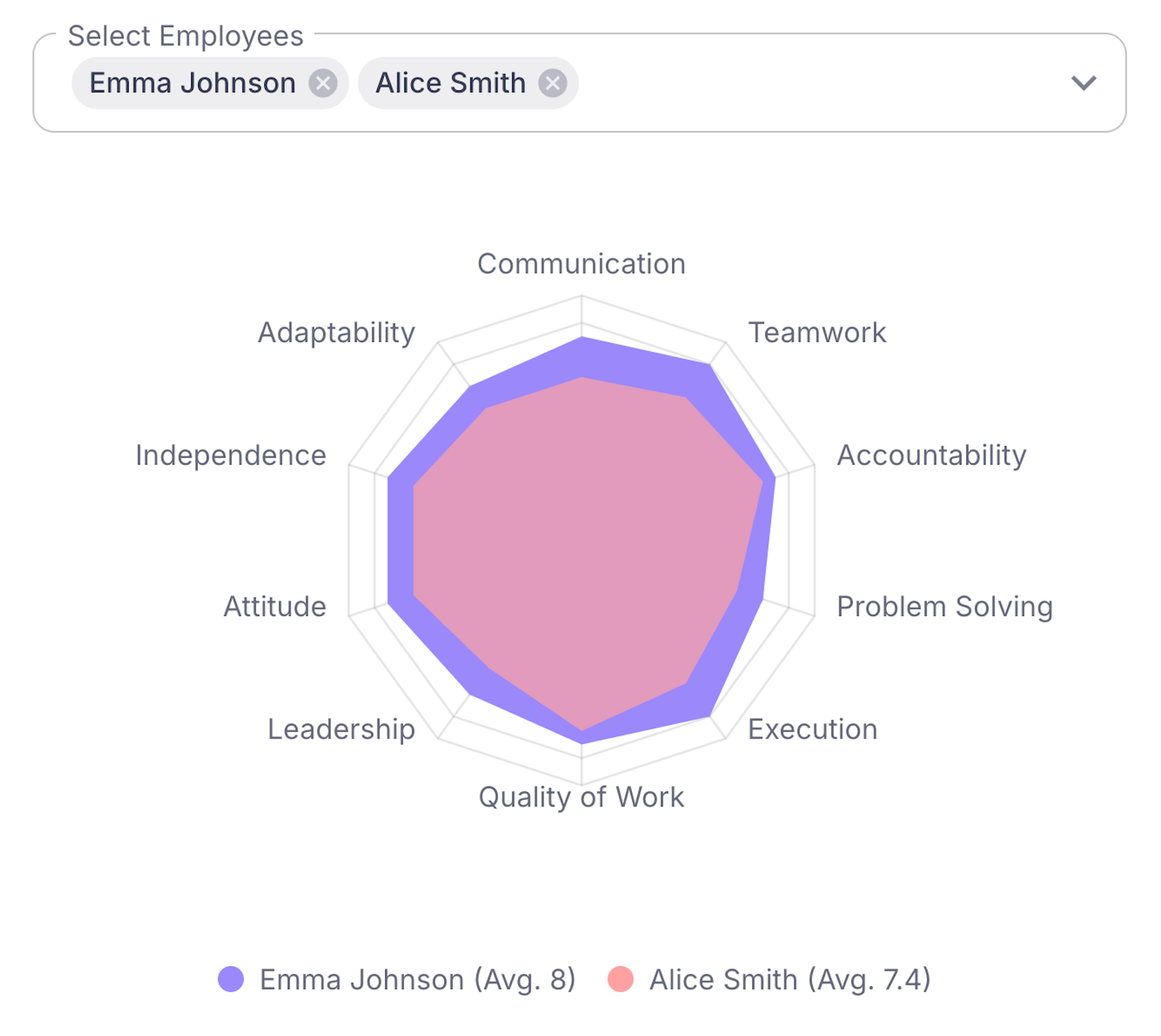Discover how strategic performance management systems, enhanced by AI, revolutionize team dynamics in tech companies. Learn to drive sustainable growth efficiently.
Understanding Strategic Performance Management Systems
Strategic performance management systems are vital for organizations aiming to align teams with overarching goals. Such systems provide clarity, driving the entire team toward common objectives. These systems are designed to measure and enhance performance through structured feedback and evaluations.
Here’s how they function:
- Alignment with Goals: They ensure every team member understands their role in achieving organizational targets. This fosters a sense of purpose and direction.
- Performance Metrics: By setting clear metrics, these systems provide a tangible way to assess progress. This clarity drives improvements and motivates teams.
- Feedback Mechanisms: Regular and structured feedback helps teams identify areas of improvement. Constructive evaluations push for growth and adaptation.
- Evaluation Processes: These systematic processes assess both individual and team performance, recognizing achievements and highlighting challenges.
Structured feedback loops cultivate an environment of continuous improvement. They enable teams to quickly adapt to challenges and seize opportunities. By focusing on data-driven insights, strategic performance management systems offer a foundation on which teams can build long-term success. As the next chapter will delve into the importance of AI in automating these processes, exploring resources like harnessing AI to optimize workforce performance can further enhance understanding.
The Role of AI in Performance Management
AI is reshaping strategic performance management systems by providing previously elusive insights. Its role in automating performance tracking is pivotal. AI can efficiently handle vast amounts of performance data, saving time and reducing human error.
With AI, trends that might slip under the radar are easily identified:
- Real-time data analysis highlights emerging patterns, guiding proactive management actions.
- Performance benchmarking becomes dynamic, allowing teams to adjust strategies efficiently.
Risk prediction is another key area where AI shines. It can foresee potential issues like employee burnout, offering solutions before problems escalate. Organizations can design interventions tailored to specific needs, enhancing overall well-being and productivity.
Decision-makers benefit significantly from AI’s data-driven insights. They receive real-time updates, streamlining the decision-making process. AI tools enable leaders to make informed choices without the traditional guesswork. This ensures strategic alignment across the organization, optimizing performance outcomes.
For deeper insights into leveraging AI for productivity, explore how workforce analytics transforms productivity. By understanding AI’s potential in performance management, firms can create agile, resilient systems that foster continuous improvement and accountability.
Creating High-Performing Teams with AI Tools
Integrating AI-powered tools into team dynamics can revolutionize productivity and engagement. These tools are not just about increasing efficiency; they cultivate an environment where team members thrive and excel. AI transforms team management through:
- Productivity Alerts: AI tools monitor workflows and alert teams to potential bottlenecks. This proactive approach drives timely resolutions, maintaining momentum and project progress.
- Continuous Assessments: Real-time performance data helps leaders understand team strengths and areas for growth. This enables tailored coaching and fosters a culture of continuous improvement.
- Automated Meeting Scheduling: Say goodbye to the back-and-forth of scheduling conflicts. AI efficiently aligns calendars, ensuring that logistics never delay essential discussions.
AI tools also help leaders instill accountability. By providing transparent performance metrics, team members clearly see their contributions and areas needing attention. This transparency encourages a sense of ownership and drives commitment to team goals.
Moreover, these innovations foster a feedback-rich environment. Continuous performance insights enable timely feedback and recognition, key to building trust and motivation. Teams that regularly assess and adjust are more agile and resilient.
For leaders aiming to harness AI for team-building, resources like unleashing productivity and leadership with AI provide valuable guidance. Embracing AI tools cultivates high-performing teams prepared for evolving challenges.
Optimizing Workforce Planning
Strategic performance management integrates seamlessly with workforce planning to create powerhouse teams aligned with organizational goals. Through dynamic workforce planning, leadership can create the perfect environment for efficient teams, calibrated to operate optimally in dynamic settings.
By leveraging capacity planning and workload balancing, leaders can optimize team dynamics. Consider these essential strategies:
- Capacity Planning: Allocate resources effectively by forecasting future needs to avoid under or overstaffing scenarios. Use predictive models to gauge future workload requirements and calibrate staffing plans accordingly.
- Workload Balancing: Distribute tasks strategically among team members to prevent burnout and ensure efficiency. A balanced workload leads to higher productivity and supports team morale.
Incorporating insights for diverse work arrangements is pivotal. Remote, hybrid, and in-office setups require flexible strategies. This ensures that all team members, regardless of location, operate cohesively and align with organizational objectives.
Strategic insights enable leaders to adapt quickly to changes, maintaining competitive team performance. By ensuring teams are structured efficiently, businesses can pivot swiftly in response to market dynamics. Strategic workforce management bolstered by flexible insights paves the way for resilient teams poised for success.
Read more about enhancing performance management with AI insights on our blog: “Harnessing AI to Optimize Workforce Performance”.
Building a Comprehensive Performance Management Framework
Delivering exceptional performance requires more than just effort; it demands a robust performance management framework. A comprehensive framework includes key elements:
- Standardized Evaluation Methods: Consistency in assessing performance ensures fairness and accuracy. It involves setting clear criteria, using precise metrics, and regularly updating assessment tools to match evolving objectives.
- AI-Driven Career Path Planning: Artificial intelligence offers predictive analytics to map potential career trajectories. This helps align employee aspirations with organizational needs, fostering growth and retention.
A tailored performance management framework is crucial for tech companies. Each organization harbors unique technological environments and needs specific to its industry. Customization enables businesses to address niche challenges effectively, enhancing workforce performance through bespoke solutions.
The unique 10-category assessment model excels by providing precise skill development recommendations. This detailed approach not only evaluates current capabilities but also identifies gaps, directing targeted training interventions. This strategic foresight empowers employees and heightens organizational success.
The concept of tailoring AI capabilities to optimize workforce performance complements these features. By integrating AI-driven insights into frameworks, tech enterprises can revolutionize their performance management systems. The merge between standardized evaluation and cutting-edge technology generates a dynamic platform for sustained performance elevation and talent advancement.
Efficient Change Management Strategies
Efficient Change Management Strategies
Integrating change management with strategic performance management systems is paramount. This alignment ensures that organizations adapt seamlessly while maximizing resource use and optimizing for better ROI. Fusing these systems helps in dissecting organizational changes, leading to proactive decision-making, which is essential for maintaining competitive advantage.
Analyzing changes allows leaders to pinpoint inefficiencies. Details like which systems are underutilized or licenses that remain dormant become clearer when scrutinized through both performance and change management lenses. By monitoring license use, organizations can cut unnecessary expenses and redirect resources more effectively. This financial prudence aids in strategic investments, guaranteeing that resources fuel growth in areas offering maximum returns.
The transition to new technologies can often be overwhelming. However, merging change management with performance systems smooths these shifts. Having a clear map of current capabilities versus desired outcomes reduces frictions during such transitions. It’s not just about adopting new tech; it’s about ensuring it aligns with strategic goals.
A streamlined change process also reinforces workforce adaptability. As organizations increasingly focus on technological enhancements, optimizing resources with strategic change oversight becomes crucial. To delve deeper into these ideas, learn more about transforming performance management strategies and how they foster seamless adaptation to change and innovation.
Ensuring Privacy and Trust in Data-Driven Insights
Ensuring privacy in data-driven performance management is crucial. It not only protects sensitive information but also fosters trust. Designing systems with a privacy-first mindset assures employees their data won’t be misused. This transparency builds a robust foundation of trust within the workplace.
Performance management systems must prioritize:
- Anonymity: Protect individual identities by using aggregate data. This assures employees their personal information remains private.
- Consent: Always obtain explicit permission for data use. This eases employee concerns about privacy breaches.
- Clear Communication: Inform employees exactly how their data is used. This transparency reduces resistance and fosters trust.
The next evolution in performance management involves utilizing data without being intrusive. Aggregation of data ensures that insights are drawn from trends and patterns, not individual actions. This approach not only maintains privacy but also enhances the quality of insights gained. By focusing on broader data trends, companies create a work culture that’s open and responsible.
Tools designed with these principles enable companies to maintain a balance between data utility and privacy. A privacy-first design helps build confidence among employees. They feel secure, knowing their employer values their privacy as much as their performance. For more insights on achieving AI-driven productivity transformation while prioritizing data privacy, explore our guide on workforce analytics for AI-driven productivity transformation.
Leveraging AI for Future-Ready Organizations
Organizations striving to be future-ready must harness the dynamic power of AI within their strategic performance management systems. This integration unleashes a new era of precision and adaptability, crucial for thriving in an ever-evolving business landscape.
By embedding AI into performance management, companies can:
- Enhance decision-making with real-time data-driven insights, enabling more accurate forecasts and efficient resource allocation.
- Automate routine tasks, freeing up human resources to focus on strategic initiatives and creative problem-solving.
- Identify trends and patterns that may go unnoticed, offering a proactive approach to potential challenges and opportunities.
Moreover, with AI’s capability to learn and evolve, the system can adapt to organizational growth and changes seamlessly. This continuous improvement loop supports ongoing team development and bolsters business success.
Tech platforms streamline integration by offering customizable AI solutions, tailored to meet the specific needs of tech companies. They ensure that as the organization shifts and grows, so does the capability of its performance management system.
By prioritizing AI-driven adaptability, companies transform into agile, future-ready entities. This setup not only ensures sustained success but also positions them as leaders in a digital-first era.
Final words
Implementing a strategic performance management system can elevate your team’s productivity and decision-making capabilities. Abloomify offers AI-powered solutions that cater to tech companies’ unique challenges. Connect with us to discover how our platform can drive your team’s success.



